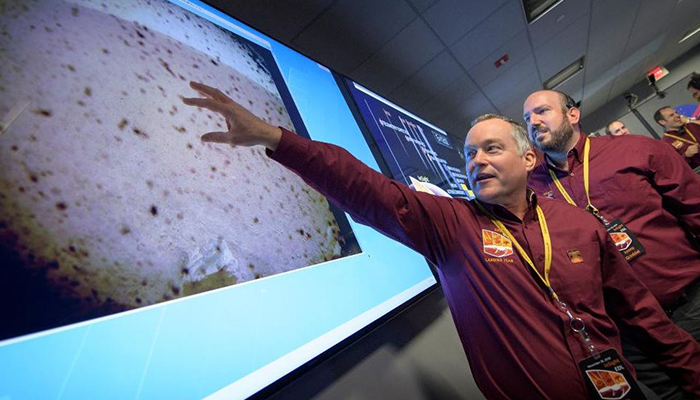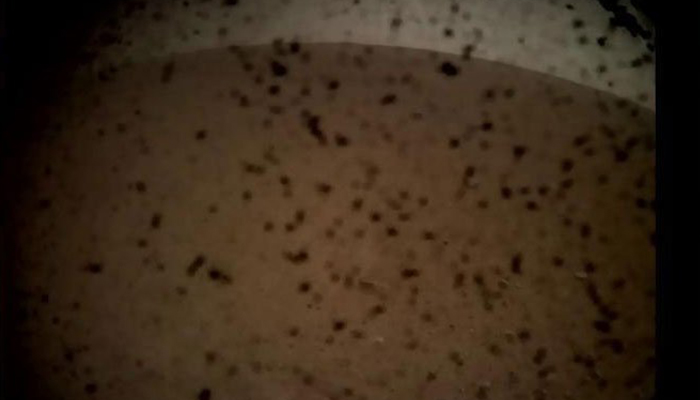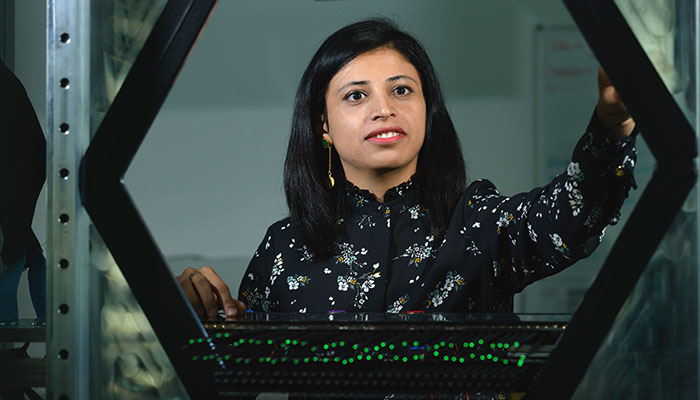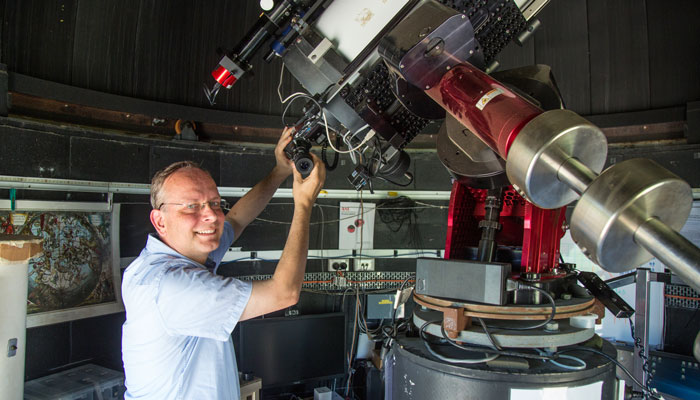Crashing rapidly through the thin Martian atmosphere, travelling at about 5.5 kilometres per second, the lander named InSight was slowed by heat shields, parachutes, and descent rockets, and landed on Mars with three legs outstretched just before 7am on Tuesday AEDT.
When probes land on Mars there is not much to slow them down because the planet has less than one per cent of Earth’s atmospheric pressure. Many previous missions failed to slow their probes down fast enough, resulting in some spectacular engineering failures.

Touchdown: Mission team members celebrated following the successful landing of InSight on Mars. Credit: NASA/Twitter.
The most significant aspect of this mission is that it is the first probe ever to land on Mars that is carrying instruments that will measure the planet’s seismic activity and heat flow, giving critical information about Martian volcanoes and earthquakes.
This new data will challenge assumptions that astronomers and scientists have about the red planet by providing cold, hard data for the very first time. Which will also mean scientists will be able to assess when and if it's safe for humans to travel there.

"There is nothing technically improbable about sending a person to Mars - there are risks involved but there were risks with early sailing expeditions as well. As we understand more about the interior of the planet it will help us forecast alot more about what those actual risks will be," says O'Neill.
All this information will be transmitted back to Earth via antennas on the lander through radio signals that are picked up by large radio telescopes on Earth. This normally takes about eight minutes.
Successful landing after seven-month journey from Earth
Australia has played a critical role in the radio network because sometimes Australia is pointing directly at Mars when North America isn’t. Australian radio telescopes often send the signals back to NASA during those times. Australian scientists are also involved in the InSight mission, including members of the Australian NASA Solar System Exploration Virtual Institute, of which Macquarie is a node.
The spacecraft left NASA Jet Propulsion Laboratory in California and took seven months to reach Mars.
The five most important things to note about this mission:
- We now have a seismometer on Mars. A seismometer is an instrument that measures ground motions, caused by earthquakes, volcanic eruptions, explosions caused by meteorite impacts.
- We can create images of the interior of the planet and what the core is doing, including whether it is solid or liquid, image details of the crust, and understand the magnetic field. Earth’s magnetic field has sheltered life for billions of years.
- We now have a heat flux probe that can measure heat flow, and we can constrain its interior radioactivity, and know what sort of planet it is compared to Earth.
- We can now use micro-rockets and parachutes during descent to bring heavy payloads down to Mars consistently - this is not just a one-off. It’s something we’ve done a few times now and it seems a reasonably safe way of getting down to Mars.
- We'll be able to see impacts occurring on Mars to understand how many impacts occur on these solar system bodies, what the rate of these is, and enable us to better understand the risk of big impacts over the next hundred million years or so.

Planet picture: The first image beamed home by Insight after its landing on Mars. The camera still has its dust-covered protective covering on it. Credit: NASA/Twitter
- Macquarie University is a node of the multi-university NASA Solar System Exploration Virtual Institute, which allows Australian scientiets to collaborate with NASA on its missions.



